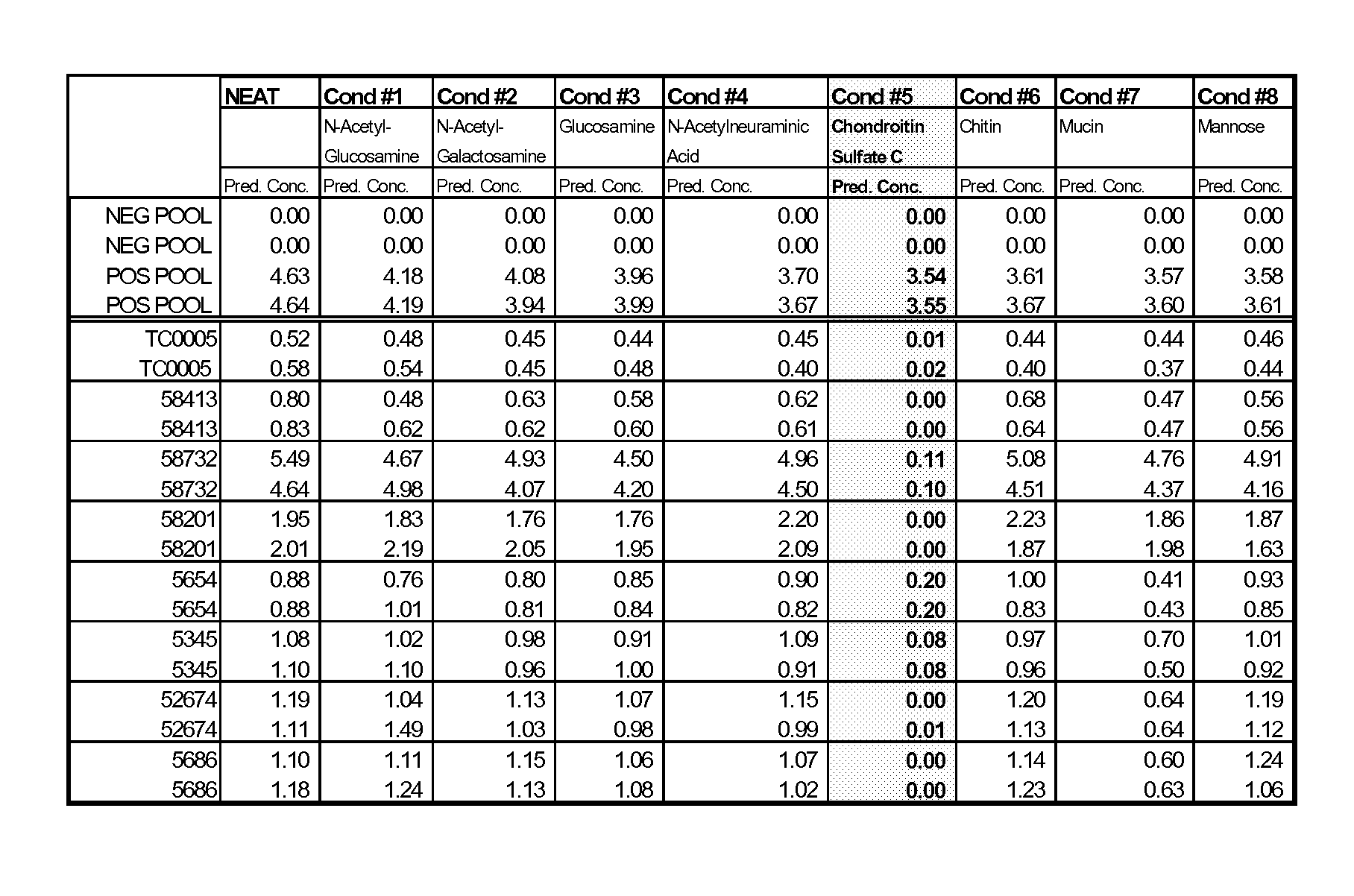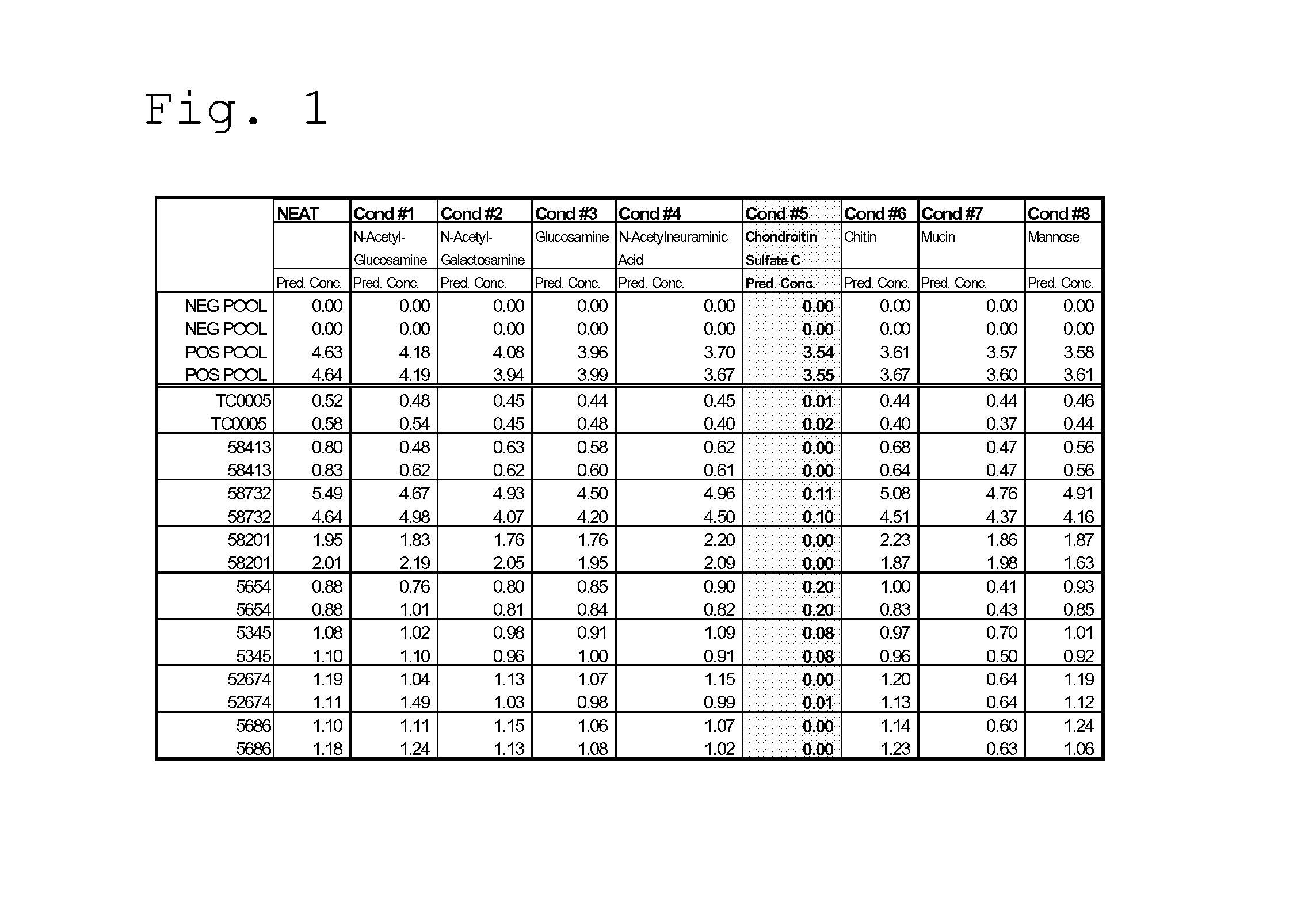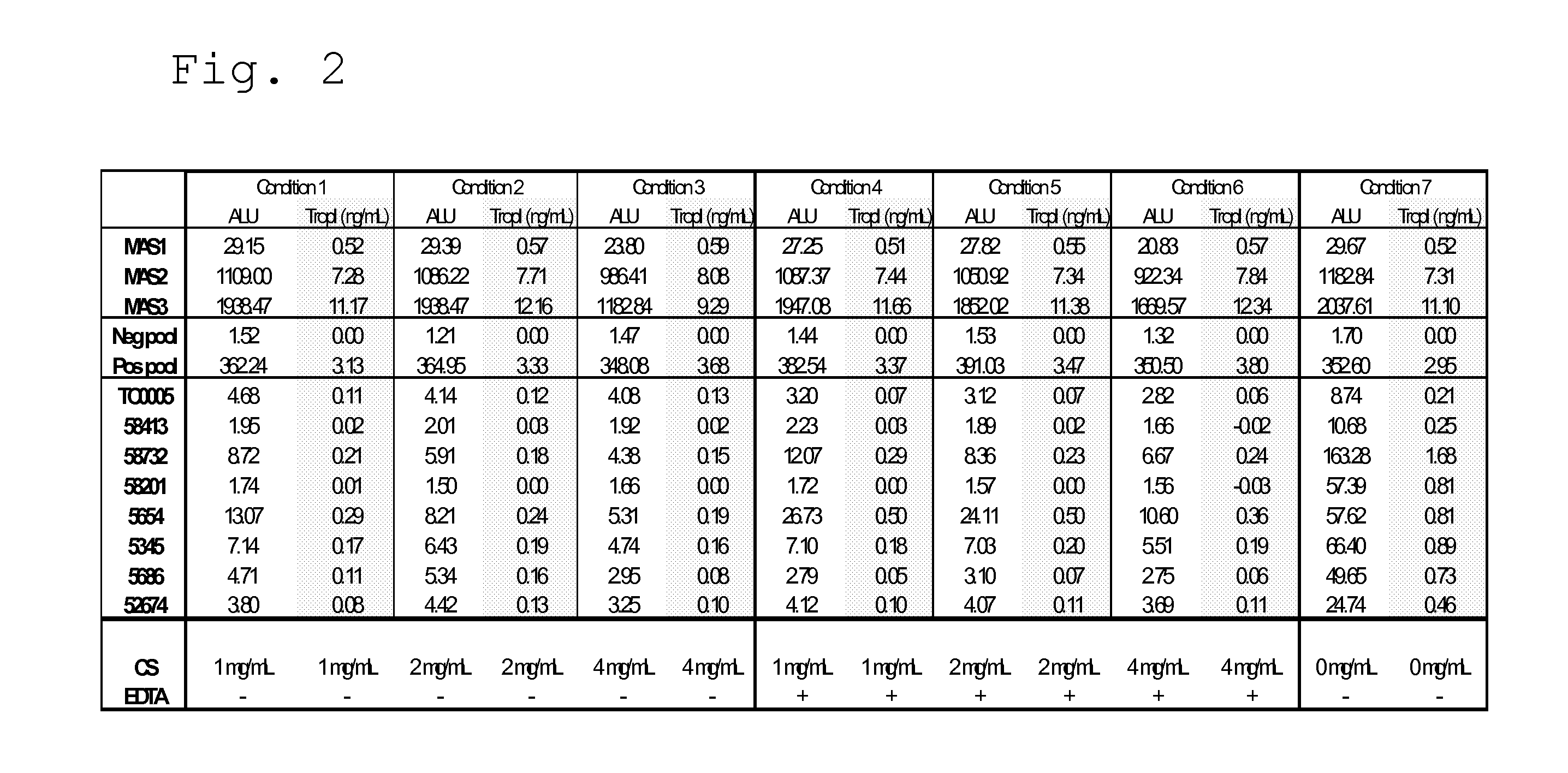Use of Glycosaminoglycans to Reduce Non-Specific Binding in Immunoassays
a glycosaminoglycan and immunoassay technology, applied in the field of immunoassays, can solve the problems of dislocation of the complex formed between the binding partners, and the large amount of non-specific binding that is typically still present in many heterogeneous assays, and achieve the effect of reducing non-specific binding
- Summary
- Abstract
- Description
- Claims
- Application Information
AI Technical Summary
Problems solved by technology
Method used
Image
Examples
example i
EFFECT OF ADDING HEPARIN TO CARDIAC TROPONIN I (cTnI OR TropI) ASSAY CAPTURE (BJ) AND DETECTION (CJ) REAGENTS
[0040]The objective of this experiment was to determine whether heparin addition to the TropI BJ and / or CJ reagents provides mitigation for false positive TropI results. Numerous reports of reproducible falsely elevated Troponin I results in serum samples were received. Several reports were also received of falsely elevated TropI results in EDTA plasma. In several instances, matching heparin plasma specimens obtained from the same patient did not show falsely elevated TropI results.
[0041]The experiment involved the spiking of heparin into the BJ and CJ reagents and the assay using these reagents was then run with rogue TropI samples that previously has been shown to give false positive TropI results.
[0042]The results show that heparin spiked into TropI CJ and run immediately was found to severely depress recovered signal. At only 10 units per mL of CJ the recovered Cal 2 (cal...
example ii
EFFECT OF SUGARS AS SAMPLE CORRECTION FACTORS IN THE BJ REAGENT
[0045]The objective of this experiment was to assess the ability of sugars, such as those present in glycosaminoglycans and those typically associated with the carbohydrate side chains of horseradish peroxidase (HRP), to mitigate the effects of rogue TropI samples when added to the BJ reagents.
[0046]As discussed in Example I, heparin addition to rogue samples was shown to mitigate false positive results. Heparin is a member of a heterogeneous group of straight-chain anionic mucopolysaccharides, called glycosaminoglycans (GAGs), having anticoagulant properties. Although others may be present, the main sugars occurring in heparin are: α-L-iduronic acid 2-sulfate; 2-deoxy-2-sulfamino-α-D-glucose α-sulfate; β-D-glucuronic acid; 2-acetamido-2-deoxy-α-D-glucose; and α-L-iduronic acid.
[0047]As an initial screening for possible sample correction factors, the following sugars were spiked into rogue TropI samples (to achieve a fin...
example iii rogue
SAMPLES WITH 0.05% CSC IN BJ
[0052]The objective of this experiment was to test rogue samples using 0.5 mg / mL (0.05%) CSC in the BJ. The rogue samples predicted positive without the addition of CSC and negative with the 0.05% CSC added to the biotin diluent. The addition of 0.05% CSC appears to have no effect on the prediction of positive and negative samples. These results are shown in FIG. 3.
PUM
| Property | Measurement | Unit |
|---|---|---|
| concentration | aaaaa | aaaaa |
| concentration | aaaaa | aaaaa |
| concentrations | aaaaa | aaaaa |
Abstract
Description
Claims
Application Information
 Login to View More
Login to View More - R&D
- Intellectual Property
- Life Sciences
- Materials
- Tech Scout
- Unparalleled Data Quality
- Higher Quality Content
- 60% Fewer Hallucinations
Browse by: Latest US Patents, China's latest patents, Technical Efficacy Thesaurus, Application Domain, Technology Topic, Popular Technical Reports.
© 2025 PatSnap. All rights reserved.Legal|Privacy policy|Modern Slavery Act Transparency Statement|Sitemap|About US| Contact US: help@patsnap.com



